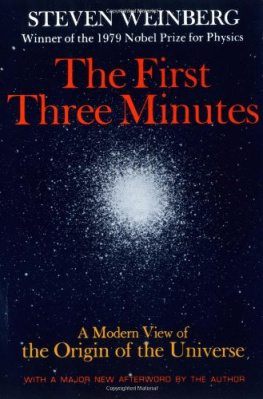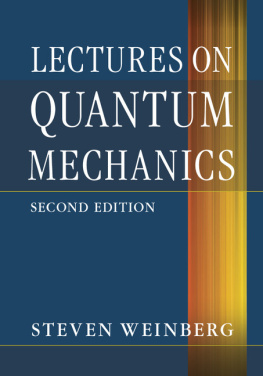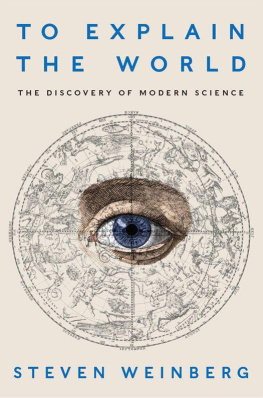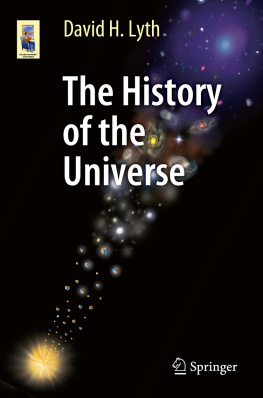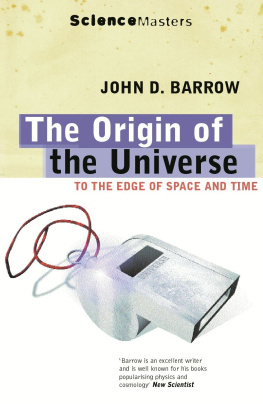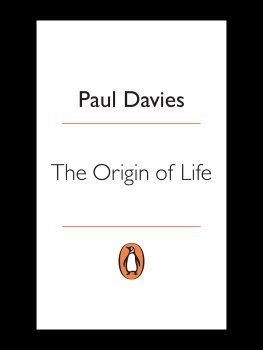Steven Weinberg - The First Three Minutes: A Modern View Of The Origin Of The Universe
Here you can read online Steven Weinberg - The First Three Minutes: A Modern View Of The Origin Of The Universe full text of the book (entire story) in english for free. Download pdf and epub, get meaning, cover and reviews about this ebook. year: 1993, publisher: Basic Books, genre: Children. Description of the work, (preface) as well as reviews are available. Best literature library LitArk.com created for fans of good reading and offers a wide selection of genres:
Romance novel
Science fiction
Adventure
Detective
Science
History
Home and family
Prose
Art
Politics
Computer
Non-fiction
Religion
Business
Children
Humor
Choose a favorite category and find really read worthwhile books. Enjoy immersion in the world of imagination, feel the emotions of the characters or learn something new for yourself, make an fascinating discovery.
- Book:The First Three Minutes: A Modern View Of The Origin Of The Universe
- Author:
- Publisher:Basic Books
- Genre:
- Year:1993
- Rating:5 / 5
- Favourites:Add to favourites
- Your mark:
- 100
- 1
- 2
- 3
- 4
- 5
The First Three Minutes: A Modern View Of The Origin Of The Universe: summary, description and annotation
We offer to read an annotation, description, summary or preface (depends on what the author of the book "The First Three Minutes: A Modern View Of The Origin Of The Universe" wrote himself). If you haven't found the necessary information about the book — write in the comments, we will try to find it.
The First Three Minutes: A Modern View Of The Origin Of The Universe — read online for free the complete book (whole text) full work
Below is the text of the book, divided by pages. System saving the place of the last page read, allows you to conveniently read the book "The First Three Minutes: A Modern View Of The Origin Of The Universe" online for free, without having to search again every time where you left off. Put a bookmark, and you can go to the page where you finished reading at any time.
Font size:
Interval:
Bookmark:

Steven Weinberg
The First
Three
Minutes
A modem view
of the origin of
the universe
FLAMINGO
Published by Fontana Paperbacks
Contents
Preface 9
1 Introduction: the Giant and the Cow 13
2 The Expansion of the Universe 20
3 The Cosmic Microwave Radiation Background 52
4 Recipe for a Hot Universe 81
5 The First Three Minutes 102
6 A Historical Diversion 120
7 The First One-hundredth Second 130
8 Epilogue: the Prospect Ahead 145
Afterword 151
TABLES : 1. Properties of Some Elementary Particles 163
2. Properties of Some Kinds of Radiation 164
Glossary 165
This book grew out of a talk I gave at the dedication of the Undergraduate Science Center at Harvard in November 1973. Erwin Glikes, president and publisher of Basic Books, heard of this talk from a mutual friend, Daniel Bell, and urged me to turn it into a book.
At first I was not enthusiastic about the idea. Although I have done small bits of research in cosmology from time to time, my work has been much more concerned with the physics of the very small, the theory of elementary particles. Also, elementary particle physics has been extraordinarily lively in the last few years, and I had been spending too much time away from it, writing non-technical articles for various magazines. I wanted very much to return full time to my natural habitat, the Physical Review.
However, I found that I could not stop thinking about the idea of a book on the early universe. What could be more interesting than the problem of Genesis? Also, it is in the early universe, especially the first hundredth of a second, that the problems of the theory of elementary particles come together with the problems of cosmology. Above all, this is a good time to write about the early universe. In just the last decade a detailed theory of the course of events in the early universe has become widely accepted as a 'standard model'. It is a remarkable thing to be able to say just what the universe was like at the end of the first second or the first minute or the first year. To a physicist, the exhilarating thing is to be able to work things out numerically, to be able to say that at such and such a time the temperature and density and chemical composition of the universe had such and such values. True, we are not absolutely certain about all this, but it is exciting that we are now able to speak of such things with any confidence at all. It was this excitement that I wanted to convey to the reader.
I had better say for what reader this book is intended. I have written for one who is willing to puzzle through some detailed arguments, but who is not at home in either mathematics or physics. Although I must introduce some fairly complicated scientific ideas, no mathematics is used in the body of the book beyond arithmetic, and little or no knowledge of physics or astronomy is assumed in advance. I have tried to be careful to define scientific terms when they are first used, and in addition I have supplied a glossary of physical and astronomical terms (p. 165). Wherever possible, I have also written numbers like 'a hundred thousand million' in English, rather than use the more convenient scientific notation: 1011.
However, this does not mean that I have tried to write an easy book. When a lawyer writes for the general public, he assumes that they do not know Law French or the Rule Against Perpetuities, but he does not think the worse of them for it, and he does not condescend to them. I want to return the compliment: I picture the reader as a smart old attorney who does not speak my language, but who expects nonetheless to hear some convincing arguments before he makes up his mind. For the reader who does want to see some of the calculations that underlie the arguments of this book, I have prepared 'A Mathematical Supplement', which follows the body of the book (p. 175). The level of mathematics used here would make these notes accessible to anyone with an undergraduate concentration in any physical science or mathematics. Fortunately, the most important calculations in cosmology are rather simple; it is only here and there that the finer points of general relativity or nuclear physics come into play. Readers who want to pursue this subject on a more technical level will find several advanced treatises (including my own) listed under 'Suggestions for Further Reading' (p. 189). I should also make clear what subject I intended this book to cover. It is definitely not a book about all aspects of cosmology. There is a 'classic' part of the subject, which has to do mostly with the large-scale structure of the present universe: the debate over the extragalactic nature of the spiral nebulae; the discovery of the red shifts of distant galaxies and their dependence on distance; the general relativistic cosmological models of Einstein, de Sitter, Lemaitre, and Friedmann; and so on. This part of cosmology has been described very well in a number of distinguished books, and I did not intend to give another full account of it here. The present book is concerned with the early universe, and in particular with the new understanding of the early universe that has grown out of the discovery of the cosmic microwave radiation background in 1965. Of course, the theory of the expansion of the universe is an essential ingredient in our present view of the early universe, so I have been compelled in Chapter 2 to provide a brief introduction to the more 'classic' aspects of cosmology. I believe that this chapter should provide an adequate background, even for the reader completely unfamiliar with cosmology, to understand the recent developments in the theory of the early universe with which the rest of the book is concerned. However, the reader who wants a thorough introduction to the older parts of cosmology is urged to consult the books listed under 'Suggestions for Further Reading'. On the other hand, I have not been able to find any coherent historical account of the recent developments in cosmology. I have therefore been obliged to do a little digging myself, particularly with regard to the fascinating question of why there was no search for the cosmic microwave radiation background long before 1965. (This is discussed in Chapter 6.) This is not to say that I regard this book as a definitive history of these developments - I have far too much respect for the effort and attention to detail needed in the history of science to have any illusions on that score. Rather, I would be happy if a real historian of science would use this book as a starting point, and write an adequate history of the last thirty years of cosmological research.
I am extremely grateful to Erwin Glikes and Farrell Phillips of Basic Books for their valuable suggestions in preparing this manuscript for publication. I have also been helped more than I can say in writing this book by the kind advice of my colleagues in physics and astronomy. For taking the trouble to read and comment on portions of the book, I wish especially to thank" Ralph Alpher, Bernard Burke, Robert Dicke, George Field, Gary Feinberg, William Fowler, Robert Herman, Fred Hoyle, Jim Peebles, Arno Penzias, Bill Press, Ed Purcell and Robert Wagoner. My thanks are also due to Isaac Asimov, I. Bernard Cohen, Martha Liller and Philip Morrison for information on various special-topics. I am particularly grateful to Nigel Calder for reading through the whole of the first draft, and for his perceptive comments.
I cannot hope that this book is now entirely free of errors and obscurities, but I am certain that it is a good deal clearer and more accurate than it could have been without all the generous assistance I have been fortunate enough to receive.
Next pageFont size:
Interval:
Bookmark:
Similar books «The First Three Minutes: A Modern View Of The Origin Of The Universe»
Look at similar books to The First Three Minutes: A Modern View Of The Origin Of The Universe. We have selected literature similar in name and meaning in the hope of providing readers with more options to find new, interesting, not yet read works.
Discussion, reviews of the book The First Three Minutes: A Modern View Of The Origin Of The Universe and just readers' own opinions. Leave your comments, write what you think about the work, its meaning or the main characters. Specify what exactly you liked and what you didn't like, and why you think so.

